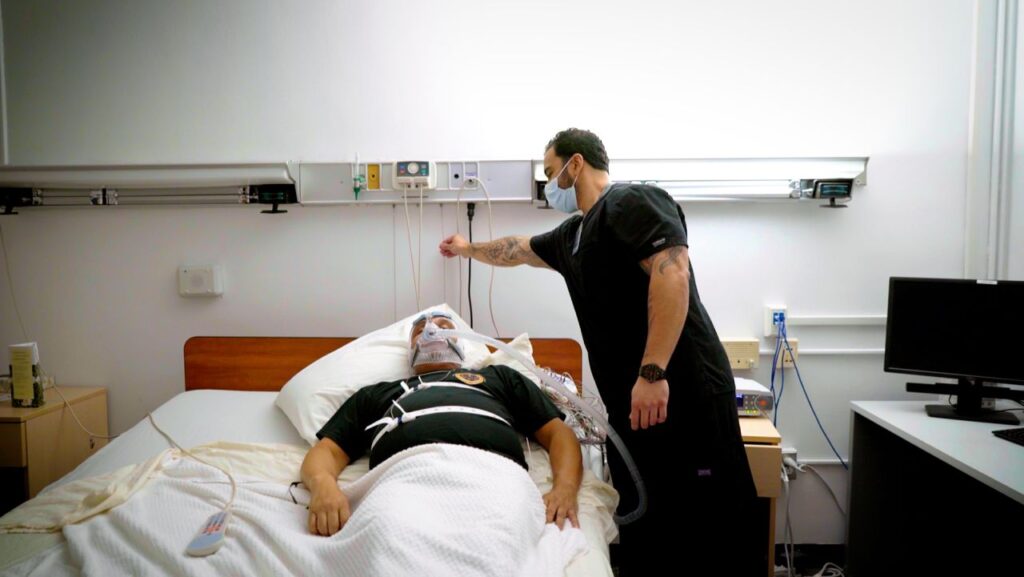For individuals living with sleep apnea, consistent use of a CPAP machine is essential to restore normal breathing, improve sleep quality, and protect heart health. However, like any medical device, CPAP machines require proper care to ensure they continue working effectively. Neglecting maintenance can reduce the machine’s efficiency, impact your therapy, and even lead to sleep disorders complications.
In this guide, we’ll cover practical tips for cleaning, replacing parts, and maintaining your CPAP machine to get the most out of your therapy.
Why CPAP Maintenance Matters
CPAP therapy works by delivering a continuous stream of air that keeps your airway open while you sleep. Untreated sleep apnea can cause:
- Low oxygen levels
- Increased blood pressure and heart strain
- Daytime fatigue and poor sleep quality
- Risk of heart disease and stroke
Example: Michael, a 55-year-old teacher, noticed morning headaches and fatigue despite using his CPAP. A check-up revealed a clogged filter and worn mask seal. After proper maintenance, his therapy became effective again, improving his oxygen flow and energy levels.
Simple Medical Explanation: Regular cleaning and timely replacement prevent dust, bacteria, and mold buildup in the machine. This ensures air remains clean, pressures stay accurate, and your cardiovascular system isn’t stressed by interrupted breathing.
See more: How Long Does It Take to Recover from Cataract Eye Surgery?
Daily CPAP Cleaning Routine
Keeping your CPAP machine and accessories clean is essential to maintain therapy effectiveness.
1. Mask Cleaning
- Wipe the mask cushion with mild soap and warm water daily
- Avoid harsh chemicals that can damage the material
- Ensure the mask is completely dry before use
2. Humidifier Maintenance
- Empty and rinse the water chamber each morning
- Use distilled water to prevent mineral buildup
- Clean with mild soap weekly
3. Hose and Tubing
- Disconnect and rinse with warm soapy water every few days
- Hang to dry completely to prevent mold growth
Weekly and Monthly Maintenance
Filters
- Check disposable filters weekly; replace if dirty
- Wash reusable filters once a week and allow them to dry completely
Deep Cleaning
- Soak mask, tubing, and humidifier in a solution of vinegar and water once a month (1 part vinegar, 3 parts water)
- Rinse thoroughly to remove all residue
Tip: Avoid running the CPAP without the mask or tubing in place, as dust can enter the system.
Replacing CPAP Parts
Over time, components wear out. Replacing them on schedule ensures optimal therapy.
| Part | Replacement Frequency |
|---|---|
| Mask Cushion | 1–3 months |
| Mask Frame | 3–6 months |
| Tubing | 3 months |
| Humidifier Chamber | 6 months |
| Filters | Weekly (disposable) or monthly (reusable) |
Example: Sarah, a 48-year-old nurse, noticed air leakage and nasal discomfort. Replacing her mask cushion and tubing resolved the problem, improving her sleep health and preventing oxygen drops.

Extending the Lifespan of Your CPAP Machine
- Keep your machine in a clean, dry environment
- Avoid exposure to direct sunlight or dust
- Handle tubing and cords gently to prevent cracks or kinks
- Follow manufacturer recommendations for part replacements and cleaning
Practical Tip: Keeping a maintenance log helps track cleaning schedules and part replacements.
Troubleshooting Common CPAP Issues
Even with regular maintenance, you may encounter minor problems:
- Air leaks: Adjust mask straps or replace the cushion
- Dryness or irritation: Use a heated humidifier or nasal spray
- Unusual noise: Check tubing for cracks or machine placement
- Pressure discomfort: Consult your sleep specialist for adjustments
Example: Kevin, a 60-year-old with obstructive sleep apnea, felt pressure discomfort. After adjusting the settings and using a humidifier, his sleep improved, and he avoided complications like high blood pressure.
Working With Your Sleep Specialist
Your sleep study and ongoing follow-ups ensure CPAP therapy is effective. Specialists can:
- Adjust pressure levels for optimal airflow
- Recommend mask types or BiPAP if necessary
- Monitor heart and sleep health improvements
Regular check-ups complement your at-home maintenance, ensuring long-term success with CPAP therapy.
Conclusion
Maintaining your CPAP machine is essential for effective sleep apnea treatment, better sleep quality, and cardiovascular health. By following daily cleaning routines, replacing worn parts, and handling the machine carefully, you can extend its lifespan and prevent therapy disruptions. Consistent maintenance, combined with proper usage and medical guidance, ensures that CPAP therapy continues to safeguard your healthy sleep and overall well-being.
FAQS
How often should I clean my CPAP mask?
Daily cleaning with mild soap and water is recommended. This prevents bacteria and mold buildup, maintains effective therapy, and ensures comfortable, uninterrupted sleep.
Mask cushions every 1–3 months, tubing every 3 months, and humidifier chambers every 6 months. Regular replacement maintains optimal air pressure and prevents leaks.
Yes. Proper cleaning and timely part replacement ensure consistent airflow, prevent airway obstruction, and reduce oxygen drops, enhancing restorative sleep.
Use distilled water in the humidifier, empty and rinse daily, and clean weekly with a vinegar-water solution to prevent microbial growth.
Comments are closed



